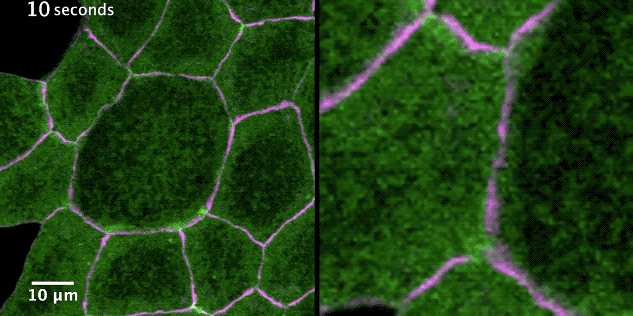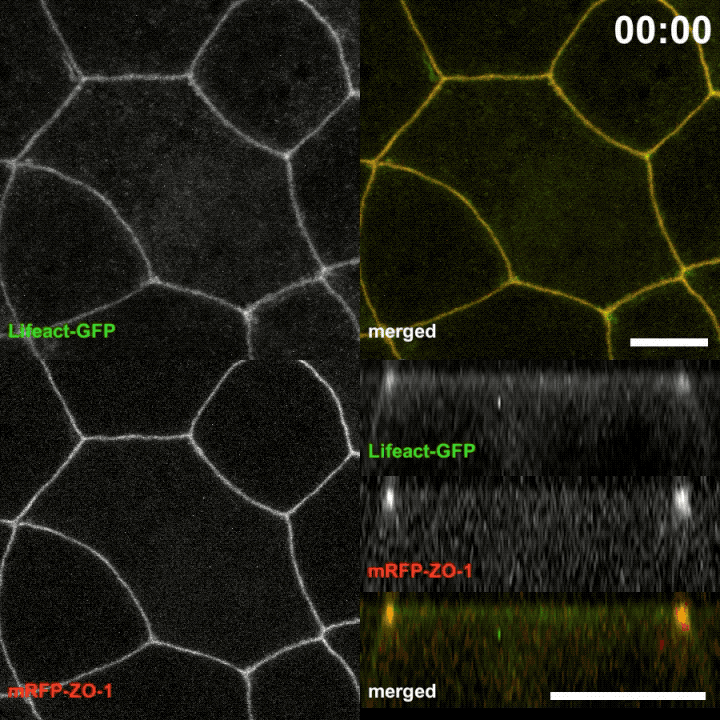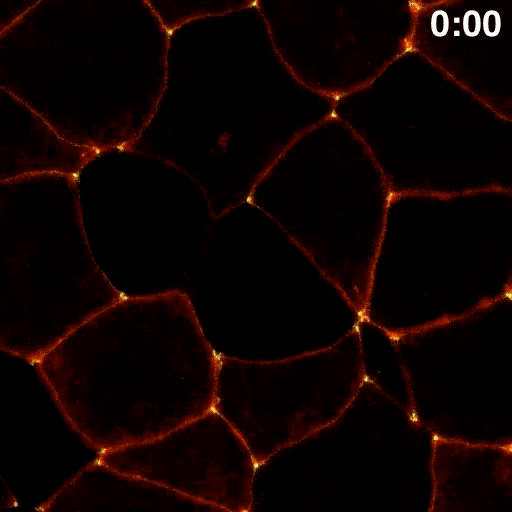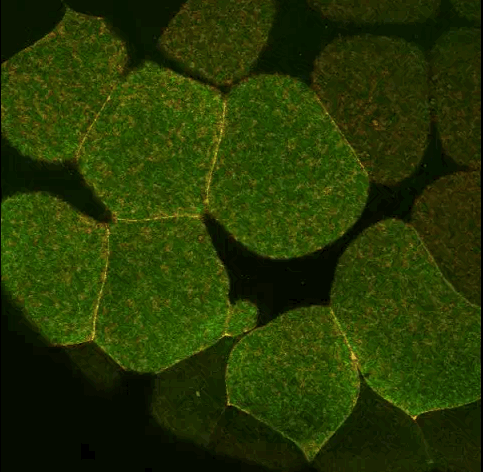 Epithelial cell-cell junctions adhere cells to one another and maintain a selectively permeable seal, even as cells undergo major shape changes. Cell-scale (e.g. cytokinesis) and tissue-scale (e.g. morphogenesis) forces drive changes in cell shape that challenge cell-cell junctions. As epithelial cells change shape, they pull on neighboring cells, often causing junctions to elongate, and requiring junction complexes to remodel. Junctions must maintain adhesion and barrier function during such events in order to ensure that cell shape changes do not severely disrupt epithelial tissue function. Adhesion and barrier function are absolutely essential for development and tissue homeostasis, and they are often compromised in diseases including cancer and Inflammatory Bowel Disease. However, fundamental questions about how cell-cell junctions dynamically remodel in response to physiological forces that challenge adhesion and barrier function remain unanswered.
Epithelial cell-cell junctions adhere cells to one another and maintain a selectively permeable seal, even as cells undergo major shape changes. Cell-scale (e.g. cytokinesis) and tissue-scale (e.g. morphogenesis) forces drive changes in cell shape that challenge cell-cell junctions. As epithelial cells change shape, they pull on neighboring cells, often causing junctions to elongate, and requiring junction complexes to remodel. Junctions must maintain adhesion and barrier function during such events in order to ensure that cell shape changes do not severely disrupt epithelial tissue function. Adhesion and barrier function are absolutely essential for development and tissue homeostasis, and they are often compromised in diseases including cancer and Inflammatory Bowel Disease. However, fundamental questions about how cell-cell junctions dynamically remodel in response to physiological forces that challenge adhesion and barrier function remain unanswered.
Research in the Miller Lab has contributed to our understanding of how adhesion and barrier function are maintained and remodeled during cell shape change events such as cytokinesis. We have identified mechanisms that allow cell-cell junctions to be stable enough to promote cell-cell adhesion and barrier function, but plastic enough to remodel when necessary. We have revealed new information about how Rho GTPase activity is regulated in space and time and how RhoA orchestrates the actin cytoskeletal dynamics responsible for cytokinesis and junction remodeling. Additionally, we have characterized novel roles for key regulators of these processes including Anillin, MgcRacGAP, and Vinculin. Xenopus laevis (frog) embryos form beautifully polarized cell-cell junctions that are well-suited for live quantitative microscopy of junctions and cytoskeletal dynamics. We have generated an extensive molecular toolkit and techniques for investigating localized dynamics of active Rho GTPases, cell-cell junction proteins, and the cytoskeleton in Xenopus. Our lab aims to investigate fundamental mechanisms that regulate epithelial cytokinesis and cell-cell junction remodeling using Xenopus laevis embryos as a vertebrate model system.




